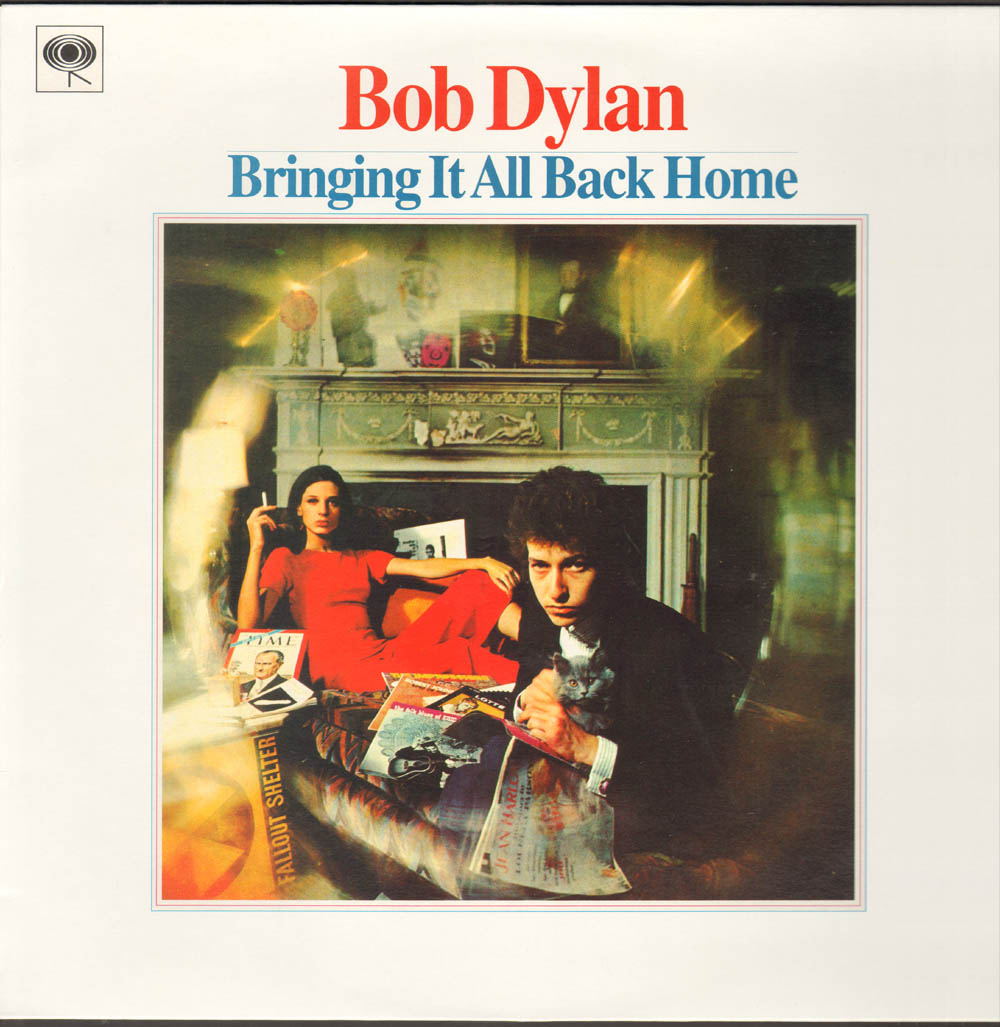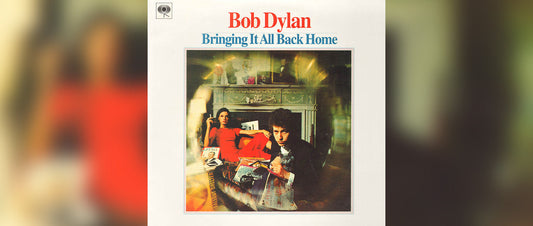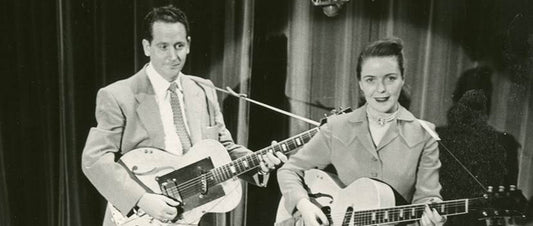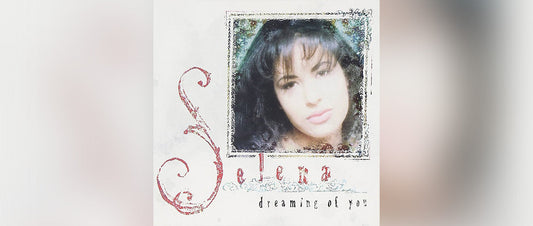
Essential Album Era Classics: “Bringing It All Back Home”
Album-era milestones are always more than just a collection of outstanding songs that flow well together. They are usually highly influential and sometimes powerful enough to define a musical style. On rare occasions, an album is potent enough to break down and rebuild a long-established genre. “Bringing It All Back Home” is a rare example of an album that accomplished all those things simultaneously. However, at the time it was released in 1965, not everyone was thrilled, to say the least. Understanding why the album had such a polarizing effect can be difficult for modern listeners without first understanding the people, culture, and times leading to “Bringing It All Back Home.”

Bob Dylan and George Harrison (Concert For Bangladesh, 1971
Bob Dylan
Bob Dylan has been a high-profile and active figure in popular music for over 60 years. He’s created 40 studio albums (not counting compilations, collaborations, or soundtracks), performed over 3,500 shows, and is the subject of several documentaries and two biographical films. Some of his many accolades include an Academy and Golden Globe award, 10 Grammys, and Rock and Roll Hall of Fame induction. Along with Bruce Springsteen, Diana Ross, Stevie Wonder, Aretha Franklin, and Loretta Lynn, Dylan is part of a small group of musicians presented with the Presidential Medal of Freedom. Additionally, for “having created new poetic expressions within the great American song tradition, Dylan is the only musician/songwriter awarded the Nobel Prize for Literature.
Dylan is noted for choosing outstanding musicians for his backing bands, starting with the Lovin’ Spoonful and the Paul Butterfield Band. His first dedicated touring band—consisting of Levon Helm, Rick Danko, Robbie Robertson, Richard Manuel, and Garth Hudson—would become an essential part of Rock history in their own right, collectively known as “The Band.” Throughout Dylan’s incredibly long career, he has famously collaborated with each era’s most notable musicians, including Joan Baez, Johnny Cash, George Harrison, The Dead, Bruce Springsteen, Tom Petty, and so many more.
With landmark hits spanning seven decades (and counting), even casual listeners can’t help but be familiar with Dylan's most popular songs and anthems. However, without a “deep dive” into his immense musical catalog, contemporary fans may not fully grasp the musical influence—or social and cultural impact—Dylan’s music had on each era.

Bob Dylan at NYC’s Café Wha? (1961)
Bob Dylan, the American Folk Music Revival, the Counter-Culture, and “Protest Music”
American Folk music is easy to identify but difficult to define. Folk (or the people's music) is usually not written down but learned from one player to another, generation after generation. Melodies are often recycled, and lyrics are written (and rewritten) over time, reflecting the times and struggles of the people who sing them. The simple musical accompaniment was strictly played on acoustic instruments (hence the slang “folk guitar”). In that sense, Bob Dylan started his journey in the traditional way—finding, listening to, and learning and performing traditional songs from any source he could find.
Fresh out of School in the winter of 1961, Dylan arrived in New York City equipped with only his Gibson J-50, harmonica, and the folk songs he’d already memorized. The budding 20-year-old Folk singer had found the center of the Folk Music revival, social and political activism, and the growing counterculture. Dylan immersed himself in the downtown Greenwich Village scene, seeking and finding key folk music figures, like his hero, Woody Guthrie, and soon-to-be mentor, Pete Seeger. Seeger was vital in helping Dylan expand his traditional repertoire and connecting him with the Folk music community.
NYC's ascending “New Left” counterculture had a massive impact on the subject and tone of Folk Revival protest music. Lyrical content began shifting to a broad range of social activism themes, such as the Civil Rights movement, Vietnam, the Cold War, and other subjects too controversial for pop or rock music. With its simple voice and acoustic instruments only arrangements, Folk music, hand in hand with the social activism of the era, stood apart and alone.

(1962) Rising Folk Music Singer and songwriter Bob Dylan with his 1948 Gibson J-50
The Birth of a Folk Music Icon
Dylan’s rise to the top of the Folk and Protest music world came fast and furious. Within a year of arriving in NY, he’d played at every rental party, coffee house, nightclub, and the Carnegie Hall “Folk Fest.” After a rave review published in the New York Times, Dylan signed a contract with Columbia Records and began recording his 1st album the next day.
Dylan’s first album consists entirely of traditional Folk songs, with only two original compositions—the autobiographical “Talkin’ New York” about his arrival in the city and “Song for Woody” set to the melody of Guthrie’s “1913 Massacre.” Although now critically acclaimed, “Bob Dylan” went barely noticed, selling only about 4,000 copies in 1962.
Dylan's second effort, “The Freewheelin' Bob Dylan,” was another matter entirely. It featured a mix of traditional and original Folk songs, including “A Hard Rain's Going to Fall” and “Blowin’ in the Wind.” Addressing growing fears over the nuclear arms race and the Civil Rights Movement, both songs became anthems, elevating the unknown 22-year-old Folk singer/songwriter to a spokesperson of a generation and bringing Folk music into the mainstream.
Dylan’s third album, a follow-up to “The Times They Are a-Changin',” is the first album with all original words and music. It represents Dylan's further growth as a songwriter and helped cement his status as a towering figure in the Folk/protest music scene and counterculture.
All of the protest-themed Folk music that had made Dylan a phenomenon was written in a short but potent two-year period between 1962 and the end of 1963--before creating the songs for “Another Side of Bob Dylan.” Although he maintains the course of all original material, and simple acoustic guitar and voice only arrangements, his lyrical content has a much different tone. The absence of “protest themes” or calls for social change left some of Dylan’s core followers cold. Many felt that Dylan “lost touch with the movement” and turned his back on his people. It was nothing compared to what was soon to come.
By 1964, Dylan had already transformed a once strictly rural art form into the mainstream of popular music and set the template for the modern singer/songwriter. Even the Beatles took note of his poetic, topical, and poignant lyrics: A catalyst for their own deeper musical exploration. If nothing else, Dylan was an influential “agent of change” in an era of change. Come 1965, the times were a-changin' (again).

Bringing It All Back Home Album Art
Bringing It All Back Home
In April 1965, Dylan created one of the most acclaimed and transformative albums in the annals of popular music. “Bringing It All Back Home” is Dylan’s fifth album and his first hard departure from his earlier work. The change in musical direction brought the attention and enthusiasm of a new and more diverse group of listeners, making it his most successful album thus far. Simultaneously, it alienated the devoted fans who helped him become the most prominent figure of an entire musical and social movement.
To begin with, the album cover provides some not-so-subtle clues that this will be a very different record than fans are accustomed to. Gone is the scruffy, low-rent dungarees and corduroy cap-clad Folk singer persona that made him a star. In place, Dylan’s decked out in a mod velvet blazer and cufflinks, with a seductive young woman in bright red lounging listlessly behind him—a look not compatible with the trappings of a rural Folkie. The image was taken using a fish-eye lens with Dylan front and center in sharp focus. Props representing his recent past (such as a Fallout Shelter sign and Freewheelin’ album sleeve) are out of focus, distorted, and Dylan's not looking back.
Of course, the true elements of Dylan's transformation appear as the stylus hits the vinyl. From the first notes of “Subterranean Homesick Blues,” the sound of unapologetically raunchy electric guitars and a rhythm as aggressive as a freight train about to jump the track pulses from the speakers. “Dylan’s gone Electric!”
These days, a musical artist with a new sound or style from album to album won’t raise an eyebrow. Back in early ’65, it was unheard of. Not even the Beatles had started straying far from their pop/rock sound quite yet. Bringing it Back Home is no simple stylistic stroll down a parallel path with a slightly different tone (like his previous “Another Side of Bob Dylan”). It’s a seismic shift in every direction. Although political and social themes return to Dylan’s lyrics, switching from acoustic Folk to electric Rock guitars was enough to enrage Folk music revival enthusiasts from the US to the UK. An ironic reaction for those calling for change with the loudest voice.

Bob Dylan with his 1964 Fender Stratocaster, mixin’ up the medicine.
The songs on side one of the album are all performed with the standard Rock and Roll band instrumentation of electric guitars, bass, keyboards, and drums. It’s not that Dylan didn’t plan to “go electric,” but he had no backing or collaborators yet. In that regard, Dylan was extremely fortunate to have Tom Wilson producing. Known for his work with cutting-edge artists and his talent for assembling the right musicians for his projects, Wilson proved to be a valuable asset.
The sessions for Bringing It All Back Home were fast and furious for such a timeless record. They were completed in two 3-hour sessions over just as many days-- without previous rehearsals. That meant the tempo, parts, and arrangements for each track had to be worked out simultaneously with the recording. Each song was recorded in just a few takes, giving the album a fresh, raw, and intense feel. Coupled with Dylan’s poetic and mature lyrical themes, the album contrasted with the polished, unthreatening sounds of American rock and the British invasion, sweeping the nation in ’65.
Although every song on Bringing It Back Home was recorded with a full band, Dylan didn’t intend his first “electric album” to be entirely full-blown Rock songs. Apart from subtle electric bass and guitar accompaniment, side two features Dylan the way people were familiar with him—alone with his acoustic guitar and harmonica.

A warning, from Dylan (Still image from Subterranean Homesick Blues promo)
He not busy being born is busy dying.
Leaving his Greenwich Village “Folk song troubadour” style, sound, and image behind him, Dylan shed his skin and was reborn. Never happy with being called “the voice of a generation” or stuck within a single musical style, he’d been seeking change after completing the songs for “The Freewheelin’ album back in ‘63. Creating and releasing “Bringing it On Home” made it official and gave notice to his fans.
The musical departure must have been liberating enough for Dylan to take such a risk and double down on the live stage. With his Fender Stratocaster in place of his familiar Gibson Flattop acoustic, Dylan and his band ascended the stage at the 1965 Newport Folk Fest. Showing up with a Rock band at the focal point of Folk Music fans with a band playing electric guitars, Dylan made a statement and pulled no punches with his core fan base. Naturally, they were having none of it. In place of the cheers and warm welcome Dylan was familiar with came jeers, and boos. During a quiet moment, a few disgruntled fans even shouted “Judas” and “traitor.” In defiance, Dylan told his band to “turn it up”. After three songs, including “Maggie's Farm” from Bringing It All Back Home, he and his band left the stage. Dylan did eventually return to the Newport stage…but not for 37 years.
Along with his new band (yup, “The Band”), Dylan's 1965 tour got mixed responses, encountering heckling from Folk revival “purists” due to his change in direction, but he stayed the course. In the wake of an album with a stylistic mix of expertly crafted songs such as Maggie's Farm, Mr. Tambourine Man, Gates of Eden and It’s Alright, Ma (I’m Only Bleeding)—Dylan left the detractors in the dust. "The albums 'Bringing It All Back Home,' 'Highway 61 Revisited,' and 'Blonde on Blonde'—often referred to as the electric trio—played a crucial role in Bob Dylan's evolution from a notable folk musician into a multi-style superstar.

Bob Dylan’s (actual) “Newport Folk Fest” Sunburst Fender Stratocaster
By 1965, rock music’s sound had already come a long way from its 1950s origins, but was still in adolescence. Only a few years later, the creative explosion of new sounds and styles happening during the Woodstock Era, Rock music had entered its rebellious young adult era. Naturally, Bob Dylan can’t be credited for being the sole force behind Rock music's sudden accelerated evolution. Still, history shows he played a pivotal role, a decisive catalyst.
“Going Electric” shocked and unexpectedly blew the doors off the old ways, immediately opening the doors for “Folk Rock” and paving the way for more mixed genres, including Americana and Roots music. More than anything else, Dylan’s bold defiance and raw creativity set the benchmark for future generations.
-

Blast From The Past: Bringing It All Back Home
Either directly or through second-hand influence, every music lover can’t help but be familiar with Bob Dylan’s “Bringing It All Back Home.” It was transformative not only for Dylan’s sound...
Blast From The Past: Bringing It All Back Home
Either directly or through second-hand influence, every music lover can’t help but be familiar with Bob Dylan’s “Bringing It All Back Home.” It was transformative not only for Dylan’s sound...
-

Legends Behind the Gear: Les Paul & Mary Ford
Alto Music presents the Legends Behind the Gear: Les Paul and Mary Ford. The birth of the most influential partnerships in modern popular music.
Legends Behind the Gear: Les Paul & Mary Ford
Alto Music presents the Legends Behind the Gear: Les Paul and Mary Ford. The birth of the most influential partnerships in modern popular music.
-

Essential Album Era Milestones: 30 years with “...
She opened the doors and paved the way for a long list of artists, including Emilio Navaira, Los Palominos, Ricky Martin, Shakira, and more. Her musical and visual style are...
Essential Album Era Milestones: 30 years with “...
She opened the doors and paved the way for a long list of artists, including Emilio Navaira, Los Palominos, Ricky Martin, Shakira, and more. Her musical and visual style are...



